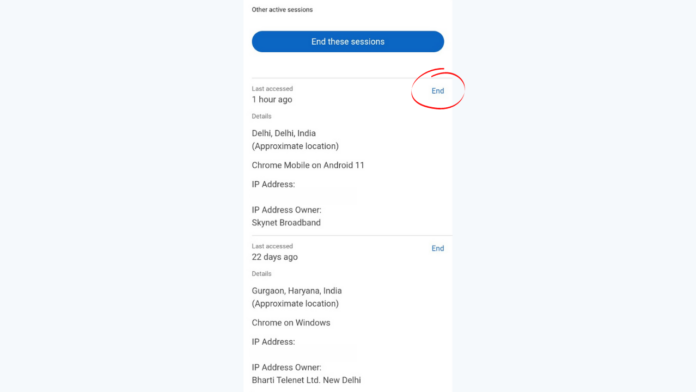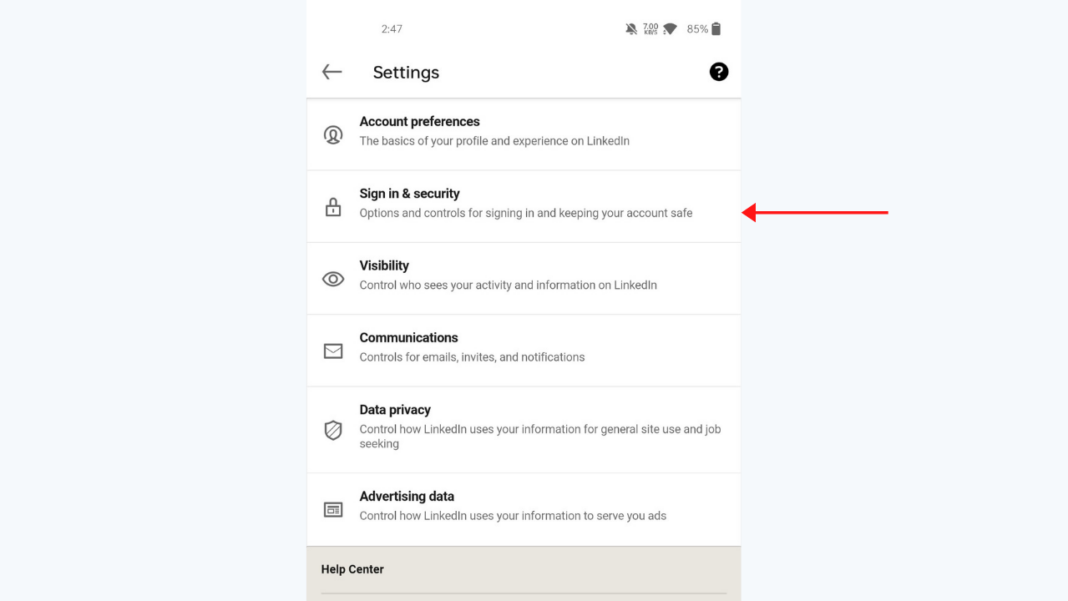Whether you're using LinkedIn for job searching, networking, or staying connected with industry news, it’s crucial to know how to logout effectively. This quick, step-by-step guide will walk you through the easy process of signing out of your LinkedIn account. Just a few clicks, and you’ll have your account secure, keeping your professional information safe from prying eyes. Let’s dive right in!
Why It's Important to Sign Out of Your LinkedIn Account

Signing out of your LinkedIn account might seem like a trivial task, but it carries several important benefits. Let’s take a closer look at why this step should never be overlooked.
- Security: One of the most significant reasons to log out is to protect your personal information. When you’re logged into LinkedIn, your profile, connections, and messages are accessible. If you forget to sign out on a public or shared device, anyone can view or even manipulate your account. Always consider your account security first!
- Privacy: Logging out ensures that your LinkedIn activity, including what you search for or interact with, remains private. If someone else uses your account, they might see your connections, endorsements, and other sensitive information. Signing out helps to maintain your professional privacy.
- Prevent Unauthorized Access: The digital world is filled with potential threats, and unfortunately, things like hacking and identity theft are a real concern. By signing out, you can reduce the risk of unauthorized access to your account, which could lead to someone impersonating you or accessing your professional contacts.
- Account Management: Keeping track of your logins is an essential aspect of managing your online presence. Signing out of LinkedIn helps you stay organized and prevents you from mixing up accounts, especially if you manage multiple profiles across various platforms.
- Work-Life Balance: If you use LinkedIn for professional networking, it can be tempting to stay logged in for convenience. However, signing out helps establish boundaries between work and personal time. It gives you the mental space to disconnect when necessary.
In summary, signing out of your LinkedIn account is vital for safeguarding your information, maintaining privacy, and ensuring that your professional network remains secure. It’s a quick action that can save you from potential issues down the line. So, make it a habit to log out—your future self will thank you!
Also Read This: How to Spell LinkedIn: Common Mistakes and Tips for Correct Usage
3. How to Logout of LinkedIn on Desktop

Logging out of your LinkedIn account on a desktop is a quick and easy process. Whether you’re using a personal computer at home or a work computer, the steps are pretty much the same. Here’s how you can do it:
- Locate the LinkedIn Menu: First things first, make sure you're logged into your LinkedIn account. Once you're on the LinkedIn homepage, look for your profile picture at the top right corner of the screen. This is the gateway to your account settings.
- Click on Your Profile Photo: Once you find your profile picture, click on it. This will open a dropdown menu that will provide you with various options related to your LinkedIn account.
- Find the Sign Out Option: In the dropdown menu, scroll down until you see the 'Sign out' option. It’s usually located at the bottom of the list. Don't worry if you’ve never noticed it before; it's easy to overlook this small detail!
- Click Sign Out: Now that you’ve located the option, go ahead and click on 'Sign out.' Once you do this, you’ll be logged out of your LinkedIn account.
And that’s it! You’re successfully logged out. If you’re using a shared computer, remember to clear your browser history or use incognito mode next time to keep your information private.
Quick Tip: If you frequently switch between accounts or use multiple profiles (like for business or personal networking), consider logging out at the end of your session to ensure your data stays secure.
Also Read This: How to Add Your CompTIA Certification to LinkedIn for Maximum Visibility
4. How to Sign Out of LinkedIn on Mobile App
Signing out of LinkedIn on the mobile app is just as straightforward as on the desktop version. Whether you’re using an Android or iOS device, you can follow these simple steps:
- Open the LinkedIn App: Start by launching the LinkedIn app on your mobile device. Make sure you are on the home screen where you can see your feed.
- Go to Your Profile: Tap on your profile photo or the 'Me' icon at the bottom right corner of the screen. This will direct you to your profile page.
- Access Settings: Once on your profile page, look for a gear icon or the option that says 'Settings.' Tap on it to open your account settings.
- Find the Sign Out Option: Scroll down through your settings until you see 'Sign out.' It might be towards the bottom, so don’t be alarmed if you can’t find it right away.
- Tap Sign Out: Finally, tap on 'Sign out.' A confirmation prompt may appear, but simply confirm, and you will be logged out of your LinkedIn account.
And there you have it! In just a few taps, you've safely signed out of your LinkedIn account. Remember, especially if you’re using a public or shared device, always log out to protect your personal and professional information.
Pro Tip: If you often forget to log out, consider setting your app to require a password for access. That way, you’ll add an extra layer of security even if you forget to sign out!
Also Read This: Understanding LinkedIn Sales Navigator Preauthorization Charges
5. Common Issues When Signing Out of LinkedIn
Logging out of LinkedIn might seem like a straightforward task, but sometimes users encounter issues that can be frustrating. Here are some common problems you may face when trying to sign out of your LinkedIn account, along with some tips to help you troubleshoot them:
- Stuck Loading Screen: You may find that when you click the “Sign Out” button, the page just seems to be loading forever. This can happen due to slow internet connections or temporary glitches on LinkedIn’s server. If you encounter this, try refreshing your page or closing the browser tab and reopening it.
- Cannot Find the Sign Out Option: Sometimes, the sign-out option isn’t immediately visible, especially on mobile devices. Make sure you're in the main menu, represented by your profile picture in the upper-right corner. If you still can’t see it, consider updating the app or your browser.
- Multi-Device Issues: If you've logged into LinkedIn on multiple devices, you may notice that logging out on one device doesn't log you out of others. Always check each device if you want to ensure complete logout from LinkedIn.
- Browser Cookies and Cache: Sometimes your browser’s cookies or cache can interfere with how LinkedIn functions. If you’re facing trouble signing out, try clearing your browser’s cache and cookies. This can often solve the issue.
- Temporary Server Problems: Occasionally, LinkedIn might experience temporary server issues. If signing out is impossible, check social media or tech news sites to see if others are experiencing similar problems.
By being aware of these common issues and knowing how to mitigate them, you can make your LinkedIn experience more seamless and less stressful. Always keep your app updated and your browser functioning optimally for the best experience!
Also Read This: Can You Merge LinkedIn Accounts? A Guide to Simplifying Your Online Presence
6. Additional Security Tips for Your LinkedIn Account
Keeping your LinkedIn account secure is essential to protect your professional information and connections. Here are some additional security tips to help you fortify your LinkedIn account:
- Use a Strong Password: Ensure your password is both strong and unique. Avoid using easily guessed passwords. Aim for a mix of upper and lowercase letters, numbers, and special characters.
- Enable Two-Step Verification: Activate two-step verification for an added layer of security. This means even if someone knows your password, they won’t be able to access your account without a secondary authentication method.
- Regularly Review Account Activity: Check your account activity regularly. LinkedIn allows you to see recent sign-ins and any changes made to your profile. If you notice anything unusual, act promptly.
- Be Mindful of Connection Requests: Only accept connection requests from people you know or trust. Scammers often create fake profiles to gain access to your network.
- Limit Profile Visibility: Adjust your privacy settings to limit who can see your profile or your activity updates. The more private your profile, the less likely you are to become a target for malicious activities.
Implementing these security tips can significantly enhance your protection on LinkedIn. Remember, a secure account is not just about safeguarding your information; it’s also about maintaining your professional reputation. Stay vigilant and take proactive measures to keep your LinkedIn experience safe and sound!
Conclusion
In conclusion, logging out of your LinkedIn account is a simple yet essential process for maintaining your online security and privacy. By following these straightforward steps, you can effectively manage your account access, especially when using shared or public devices. Here are the key takeaways:
- Always log out: Make it a habit to log out after each session, particularly on devices that are not exclusively yours.
- Check devices: Regularly review devices that are signed in to your account to ensure no unauthorized access.
- Use security features: Take advantage of LinkedIn's security features, such as two-step verification, to enhance your account safety.
By staying vigilant and practicing these habits, you can enjoy a safer experience on LinkedIn while networking and exploring opportunities. Remember, your online security is in your hands, so make the effort to protect your personal information and professional reputation.
 admin
admin








